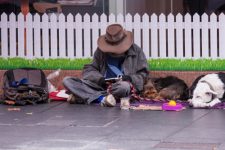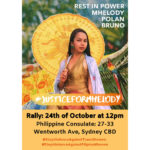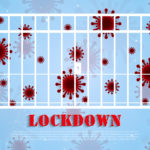The Homelessness Crisis Is Growing

The 2016 Census homelessness data was finally released on March 14. It confirms what many already knew, that the number of people experiencing homeless in this country is on a steep increase. Indeed, 50 out of every 10,000 Australians is now homeless.
The Australian Bureau of Statistics (ABS) figures reveal that homelessness has grown by a staggering 14 percent over a five year period, up from 102,439 people in 2011 to 116,427 in 2016.
While many are aware of the number of people with no permanent fixed address is on the rise, due to the visibly growing number of rough sleepers showing up on the street, these vulnerable people only account for 7 percent of the nation’s homeless, or 8,200 individuals.
The ABS defines an individual as homeless if their current living arrangement is in an inadequate dwelling, or they have no tenure, or they don’t have control of and access to space for social relations.
Most of the increase in homeless is attributed to people living in severely crowded dwellings, which are living spaces that need four or more additional bedrooms to accommodate those residing there. The number of people living in overcrowded dwellings has risen by 23 percent, or 9,718 people.
And this is all occurring in one of the most prosperous nations in the world. Australia was ranked the 13th largest economy on the globe last year, and it has one of the most equal distributions of wealth. So, it’s quite obvious that something is going terribly wrong with those at the helm.
A lack of public housing
The cost of housing in Australia has been rising notoriously over recent years. And it’s a main factor behind the rise in homeless. The mean price of residential dwellings in this country rose by 39 percent between September 2011 and September last year.
RMIT homelessness professor Guy Johnson outlined that another key driver behind the crisis is a decline in public housing. The 2017 Report on Government Services indicates that since 2009 the number of public housing homes has actually dropped by 16,000 dwellings.
The professor pointed to the 2014 Journeys Home national survey, which found that “the most effective way of preventing homelessness amongst chronically disadvantaged households is public housing.”
“So, the number one protective factor is actually diminishing, not just in overall terms, but also as a percentage of the amount of housing stock we have in the community,” professor Johnson told Sydney Criminal Lawyers®.
Australian Greens Senator Lee Rhiannon pointed out last November that social housing – both public and not-for-profit-run community housing – only accounts for 4 percent of the overall housing stock in this country, whereas in a nation like the Netherlands it makes up around 20 to 30 percent.
Steering in the right direction
According to Johnson, governments around Australia need to “look at their housing strategy and how they can grow the amount of affordable housing stock for low income households.” And this would help to accommodate some the 200,000 Australians currently on the social housing list.
The professor also recommends an overhaul of the service sector. He said there’s a focus on prevention, and up to 60 percent of those utilising homeless services are housed. These services should primarily work with the homeless, with prevention being moved into mainstream servicing.
Temporary is not the solution
The Turnbull government’s Treasury Laws Amendment (National Housing and Homelessness Agreement) Bill 2018 is currently under the consideration of the Senate. If passed, it will provide the framework for government’s new approach to housing and homelessness.
Many in the homelessness service sector assert that it’s just more of the same. But, chair of Homelessness Australia Jenny Smith said in November that one change is that the bill gives the government power to set unrealistic state and territory targets and cut funding if they’re not met.
Ms Smith further stressed that more funding is urgently needed for permanent housing options for people living in temporary accommodation. A major issue with the system now is that short-term housing options are an often dangerous quick-fix approach that don’t lead to long-term solutions.
The premier state
In NSW, there were 37,715 people experiencing homelessness in 2016. The census figures reveal that over the five year period homelessness in this state actually rose by 27 percent. This is against the backdrop of a 65 percent rise in the mean price of residential dwellings over 2011 to 2017.
Digby Hughes, senior policy and research officer at Homelessness NSW, said that “one of the most worrying aspects is the increase in people living in severely overcrowded dwellings.” This rose by 74 percent in NSW, up from 9,655 people to 16,821.
“Over 20 percent of people living in severely overcrowded dwellings earn an income over $400 but under $650,” the homelessness advocate added.
An approach that works
Mr Hughes supports a housing first solution to tackling the homelessness crisis. This is an approach that initially provides homeless people with a permanent place to live, accompanied with needs-based support services.
The Finnish government adopted the housing first approach in 2008. And by 2014, the number of long-term homeless in Finland had decreased by 1,200 people. Rough sleeping had virtually been eradicated, and with it the need for crisis accommodation.
There are already two centres in Sydney providing housing first options for the homeless: Common Ground in Camperdown and Platform 70 in the city. But, as Hughes makes clear these “require ongoing funding,” as the residents need lifetime support, and “this has not been forthcoming.”
Criminalising the homeless
However, state governments and local councils are often more concerned about dealing with the aesthetic side of homelessness, than tackling the issue with long-term solutions.
When the Martin Place homeless camp grew in numbers last August, NSW premier Gladys Berejiklian said that the rough sleepers made her feel “completely uncomfortable.” And then her government passed legislation specifically aimed at throwing them out of the public mall.
Many of them simply moved on to Glebe’s Wentworth Park, where they were similarly evicted in mid-October.
While former Melbourne lord mayor Robert Doyle tried to change the bylaws in his city last year to ban rough sleeping in the CBD, all because of the furore that erupted in the press over a homeless camp out the front of Flinders Street station.
And with that in mind, it’s hard to imagine Australian governments investing in evidence-based solutions like housing first. At least not until politicians start taking seriously that being elected into office means serving the whole community, including its most vulnerable, not just the wealthy.







